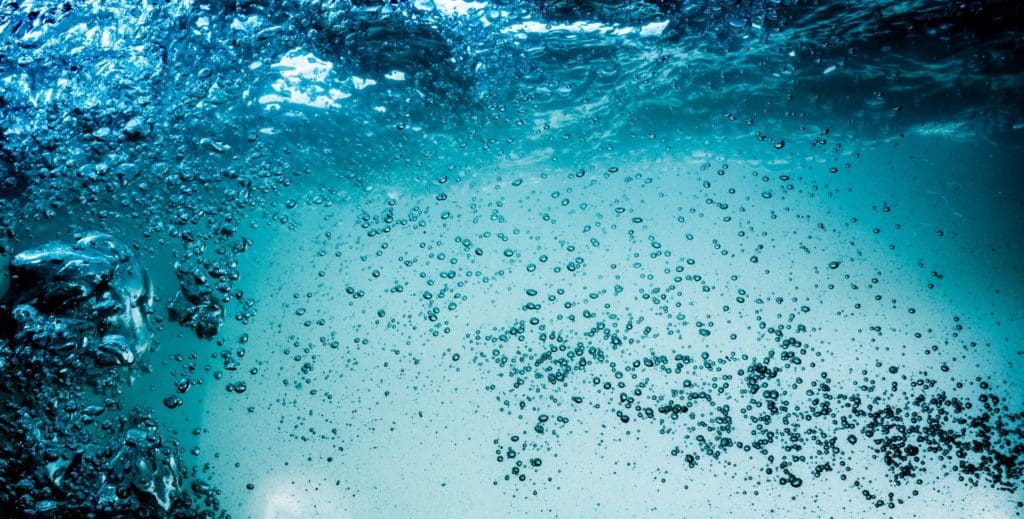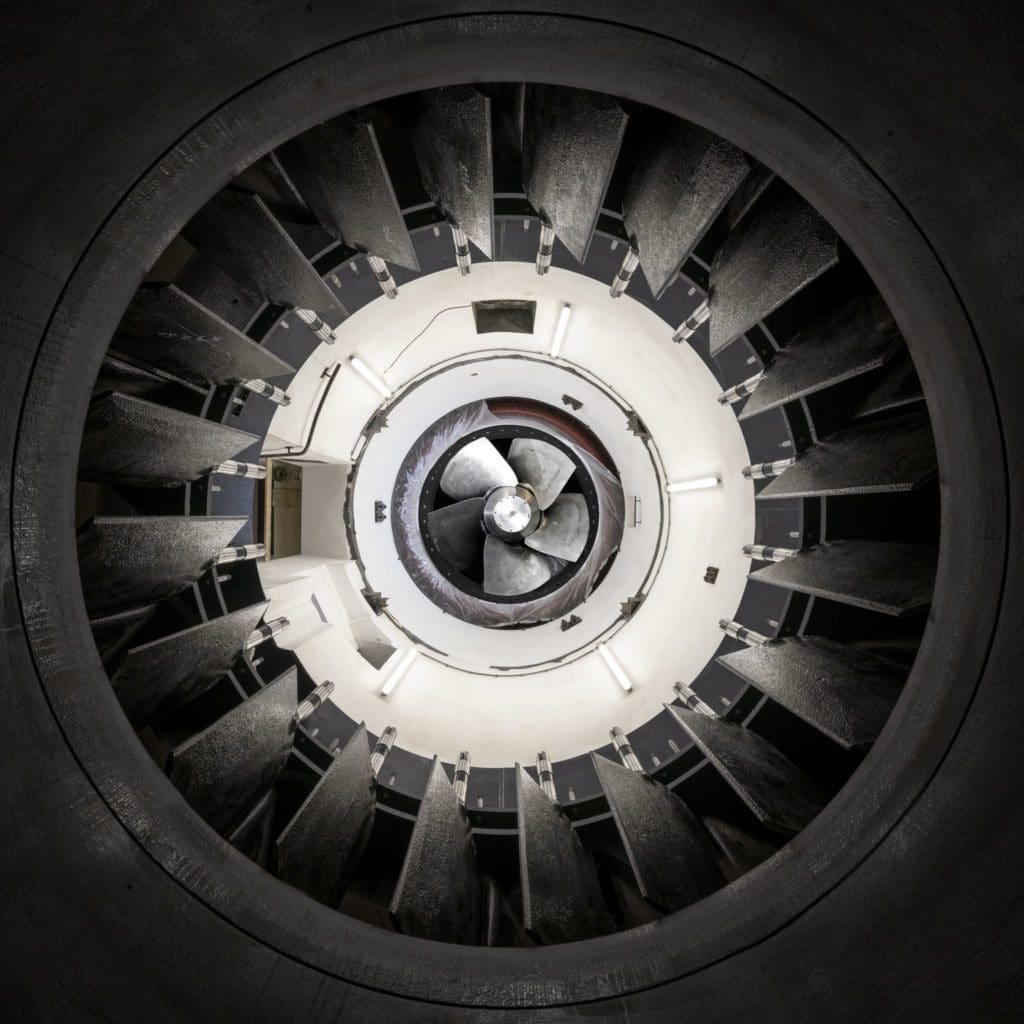Hydropower is a sustainable renewable energy source that can power homes, factories, and cities. It has been one of the world’s cheapest energy sources and used for over one hundred years.
One of the challenges to maintaining hydropower equipment is the effect of cavitation erosion on the turbines. Cold spray technology can mitigate and prevent this degradation via in-situ repairs or corrosion-resistant coating applications.
VRC Metal Systems leads the US market while expanding into global cold spray operations. Contact our experienced staff to get started with a portable cold spray system for efficient repairs and enhancements when and where they are needed.
Hydropower Turbines
Hydropower turbines are forced into motion by water flowing onto the turbine vanes. The turbines convert the kinetic energy from this flowing water into mechanical power, which is used to rotate an electrical generator to produce electricity.
Hydroelectricity does not require fuel or combustion like other forms of power generation, such as coal-fired plants or nuclear reactors; therefore, it produces no air pollution or greenhouse gases (GHGs). It relies on the water cycle to replenish reservoirs, meaning that no resources are diverted for this energy source. These characteristics make hydroelectricity a very attractive and environmentally friendly energy source.
Problem with Hydropower
One problem with hydropower is the deterioration of the turbines due to cavitation erosion.
Cavitation erosion is a type of wear that occurs when vapor bubbles form in a liquid and then collapse. The high pressure and turbulence created by the fast-flowing water can cause these vapor bubbles to form very quickly. This process creates shock waves that can cause severe damage to the turbine’s surface.
Hydropower turbines are particularly susceptible to cavitation erosion because their blades are often located near the water surface where the turbulence is highest. In addition, the blades are also subjected to repeated impacts from the droplets that are created as the water vaporizes during cavitation. These impacts can cause tiny cracks and pits in the temperature-sensitive blade surface, leading to more rapid erosion.
Cold Spray Technology
Cold spray is a new and innovative technology that can coat and repair metal surfaces. This process uses an electrically heated high-pressure gas, such as helium or nitrogen, to accelerate metal and nonmetallic powder particles until they impact the target substrate material at supersonic speeds.
The particles may sometimes travel at speeds of up to 1-2 km/s before striking the surface. As these microscopic projectiles hit the component, they undergo plastic deformation and recrystallization, forming submicron grain structures resulting in high levels of particle bonding.
For hydropower turbines, this particle bonding deposits a new layer of material. These cold spray deposits can fill any pits, cracks, or flaws in the metal surface and add a corrosion-resistant element. Cold spray is a solid-state process, meaning that no melting occurs. The heat input into the base part is low enough that no “heat-affected zones” are formed: The metallurgical properties remain unchanged. The same goes for deposit materials, where alloying elements maintain their position in the material structure.
Cold spray can be used to deposit galvanically matched materials, but can also be used to deposit coatings that are either more noble or less noble than the base part, as desired. Galvanically inert hard phases can be added to the deposit powder to create a more wear-resistant surface. The process is self-peening, resulting in a deposit with compressive residual stresses, which hinder crack formation and growth.
The portability of the VRC Cold Spray systems minimizes downtime and transportation expenses by performing repairs on site. The wide range of consumable powders allows you to choose the best material to fit your needs, whether surface repair or adding a corrosion-resistant layer to defend against future wear and impact.
Benefits of Using Cold Spray
There are many benefits to using cold spray, making it ideal for applying protective coatings to large metal structures such as aerospace surfaces or hydropower turbines.
Efficient and Cost-Effective
Cold spray is an efficient process with very little waste. As a result, you can use it to repair small and large pieces of equipment, reducing the overall cost compared to other techniques such as laser welding. By bringing the technology to the component instead of the component to the technology, you can also reduce the overall downtime of your turbine.
Non-Destructive
One advantage to the use of cold spray processes is that it’s non-destructive; for instance, there are no heat-affected zones. As a result, components can be repaired and restored to their original condition without altering the base material or losing performance or strength.
Fast Results
This process can yield high-quality results quickly. Minimal surface preparation is required, and the focused particle spray reduces the need for masking. In addition, since the process uses a lower temperature, there is no need to preheat the part prior to repair (even when repairing cast iron), and no lengthy cool-down period needed after repair. These reduced setup and finishing steps mean faster repairs.
Easy to Use on Large Surfaces
The simplicity and portability of this method make it suitable for applying coatings to a wide range of large surfaces quickly and efficiently, such as hydropower turbines. Surfaces with severe pitting and erosion can be restored to original dimensions while adding a smooth, uniform, corrosive- and wear-resistant finish.
Versatile
This process works on various materials, including both ferrous and non-ferrous metals. It is also possible to apply coatings with different thicknesses and compositions depending on the specific solution needed.
You can use cold spray technology to:
- create cosmetic repairs to surfaces or bring a component back to its original dimensions,
- apply functional coatings to prevent wear and corrosion, or
- act as an additive manufacturing technique to add small, complex features to larger components.
Environmentally Friendly
Cold spray does not produce any harmful fumes or gases, making it a more environmentally friendly option for coating and repairing metal surfaces. Additionally, cold spray can repair existing components and reduce future wear, extending the lifespan of these parts.
These attributes make cold spray an environmentally friendly process that reduces waste, saves energy, and lowers costs while making any hydropower facility more sustainable.
The Power of Cold Spray
Cavitation erosion is a significant problem for hydropower turbines and can cause considerable damage to the blades.
VRC Cold Spray can improve the durability of these turbines by correcting surface defects and adding a protective corrosion-resistant coating. In addition, this process is fast, efficient, portable, and environmentally friendly, making it ideal for repairing large metal components in-situ.
To speak with an expert on cold spray equipment, materials, and processes, please visit www.VRCMetalSystems.com.




